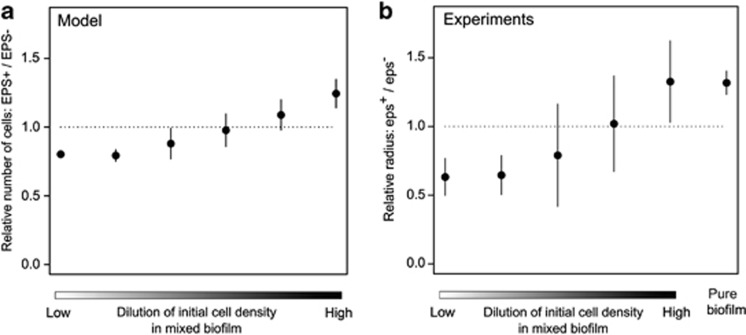Figure 3.
Effect of the density of founder cells on the relative fitness of cooperation. (a) Simulation results (n=10 per treatment). As in Figure 2a, we simulated the growth of two strains in mixed biofilms that were initialized with different numbers of founder cells. Now one strain (‘EPS+') produced EPS while the other one (‘EPS−') did not. Starting with equal proportions, the relative frequency of EPS+ cells was determined at the end of the growth period. At high founder densities (i.e. a low dilution level) the EPS− strain had a selective advantage, whereas the EPS+ strain had a selective advantage at low founder densities (i.e. a high dilution level). Dots and error bars represent, respectively, the mean and standard deviation. (b) Lab experiments (n=7–18 per treatment; in total 74 biofilms). At various dilution levels, biofilms were inoculated with eps− and eps+ strains that could be distinguished due to different fluorescent markers. After 3 days of growth, the fitness of each strain was quantified by the distance the strain had grown from the center of the biofilm towards the edge (i.e. the radius). In addition to the relative radius in various mixed cultures of eps− and eps+, also the quotients to the radii of two separate monocultures of eps− and eps+ pure biofilms are shown.

